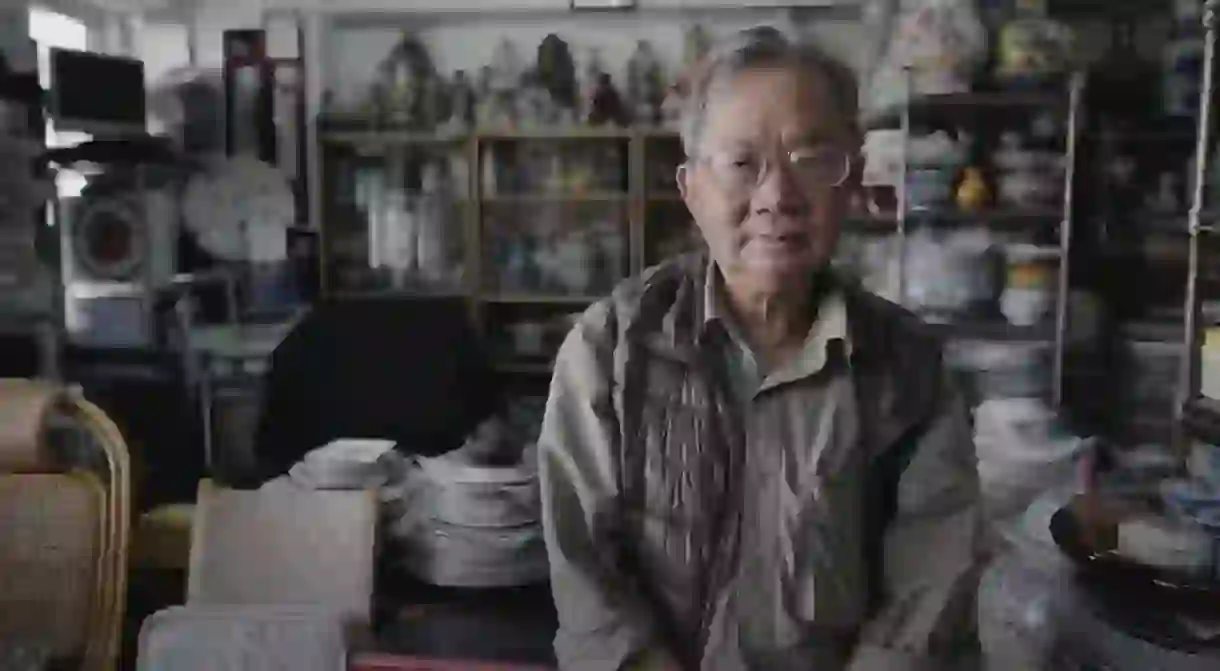Hong Kong's Last Porcelain Painter

Tan Zhihong is one of Hong Kong’s last remaining porcelain painters. With declining interest from younger generations to learn the craft, as well as the rise of mass-produced pieces, it’s not certain how much longer this traditional handicraft will survive.
Many have admired, or perhaps even owned, some Chinese hand-painted porcelain. The blue-and-white patterns are the most common and portray an array of Chinese folktales that appear on everything from tea cups to vases, as well as dishes and plant pots. However, according to one of the city’s last remaining porcelain painters, this fine craft could be coming to an end in Hong Kong.
Tan Zhihong has been working at Yuet Tung China Works for more than 40 years. Established in 1928, it was Hong Kong’s first hand-painted porcelain manufacturer, and during the factory’s peak in the 1950s, there were more than 1,000 craftsmen in the city. However, these days, with waning interest in learning the craft, it’s doubtful that there will be any inheritors to take over after craftsmen, like Zhihong, retire.
Yuet Tung China Works is an industrial centre in Hong Kong’s Kowloon Bay area, and it’s a treasure trove of porcelain wares, which are stacked floor-to-ceiling across four showrooms. The factory specialises in producing ‘Guang Cai’ the term that describes the style of coloured ceramicware that originated in the Chinese city of Guangzhou. Guang Cai porcelain can be traced back to the Qing Dynasty (1644–1912) and was particularly popular during the mid 1700s and early 1800s.
“Painting in the Guang Cai style requires specific techniques,” says Zhihong. “The object’s shape and size determines the kind of method we use.”
Each pattern has a defined style with flowers, birds and characters, and Zhihong enjoys painting each one. “I don’t have one favourite pattern,” he says. “I like to paint all of them.” The painting style is traditional and “passed down through generations,” he continues. “They’ve been passed down for hundreds of years.”
These days, despite fading interest in learning the craft, Zhihong still tries to teach others as often as possible. “Some people are interested and will come to learn. Once they learn the basics, they’ll practice and then return. They’ll continue to develop their skills at home.”
chinaYuet Tung China Works is currently the only porcelain factory that remains in Hong Kong. They count many of the city’s five-star hotels among their clients, as well as overseas clients in the US and Europe and even Hollywood celebrities.
Having produced beautiful hand-painted porcelain pieces for the better part of a century, there’s little doubt that the company’s work will endure and serve as a lasting legacy. Meanwhile, there are some efforts to develop and preserve this traditional craft, including workshops that allow the public to design their own ceramics. But, sadly, most people are now only interested in pursuing it as a hobby rather than as a living.
However, Zhihong, for one, remains undeterred and says he will be a faithful supporter of the craft until the end. “I haven’t considered retiring yet. I’ll retire when I’m unable to paint anymore.” There’s hope his passion will yet inspire others to take up the baton.













